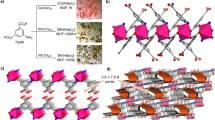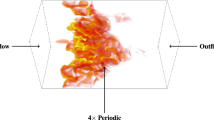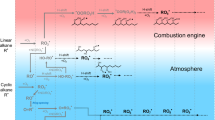Abstract
IT has been shown that an abnormal dissociation obtains in flame gases resulting from the combustion of carbon monoxide–air mixtures1,2. (Such an abnormal dissociation also obtains in hydrocarbon flame gases3.) If, as we believe, the dissociation products of metastable carbon dioxide molecules are carbon monoxide and atomic oxygen, there must be a considerable concentration of atomic oxygen in the flame gases unless there is a large excess of carbon monoxide present, in which case atomic oxygen recombines almost as soon as it is formed.
This is a preview of subscription content, access via your institution
Access options
Subscribe to this journal
Receive 51 print issues and online access
$199.00 per year
only $3.90 per issue
Buy this article
- Purchase on SpringerLink
- Instant access to full article PDF
Prices may be subject to local taxes which are calculated during checkout
Similar content being viewed by others
References
Nature, 145, 896 (1940).
Proc. Inst. Mech. Eng., 151, 236 (1944).
Unpublished experiments.
Trans. Farad. Soc., 42, 292 (1946).
Author information
Authors and Affiliations
Rights and permissions
About this article
Cite this article
DAVID, W., R.OUNTHWAITE, C. & CARPENTER, N. Atomic Oxygen and Dissociation in Flame Gases. Nature 161, 726 (1948). https://doi.org/10.1038/161726a0
Issue date:
DOI: https://doi.org/10.1038/161726a0



